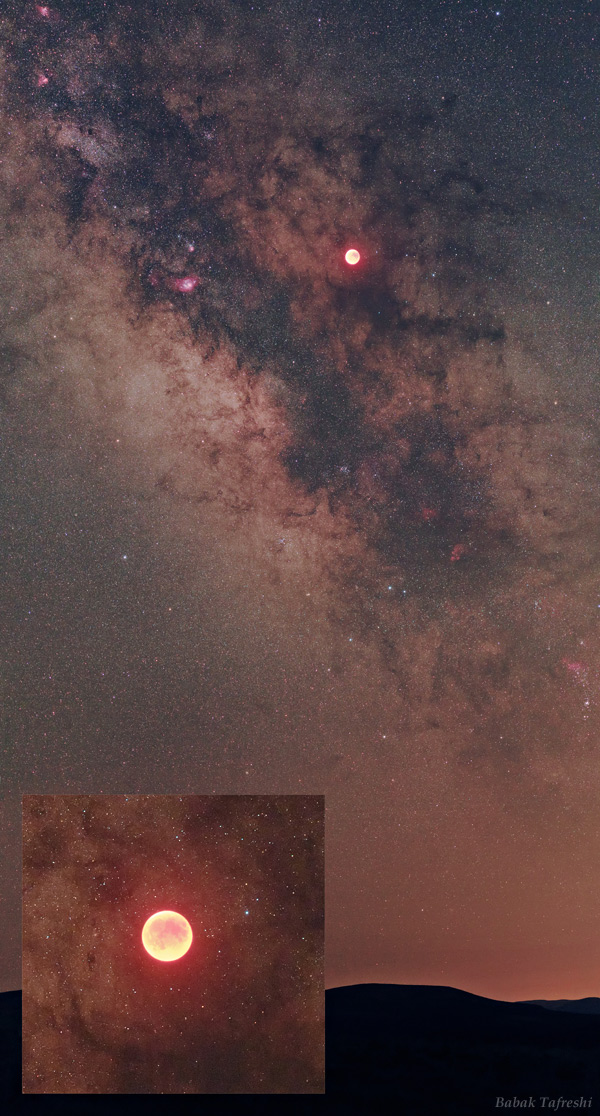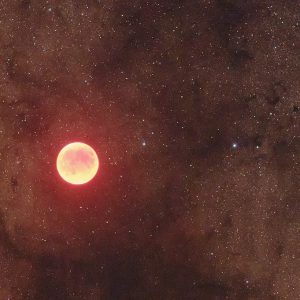Galactic Eclipse
Description
On 15 June 2011 the totally eclipsed Moon was very dark, with the Moon itself positioned on the sky toward the center of our Milky Way Galaxy. The red lunar disk lies in the constellation Ophiuchus near the border with Scorpius and Sagittarius. Many of notable deep sky objects in this part of the sky are captured here including several large emission nebulae with vivid red color. Click on the second photo to see the photographer’s close-up image of the eclipsed moon near the beautiful Snake dark nebula (upper right). The Moon does not completely disappear as it passes through the Earth shadow because of the refraction of sunlight by the Earth’s atmosphere into the shadow cone; if the Earth had no atmosphere, the Moon would be completely dark during an eclipse. Earth blocks the direct light from the sun but some indirect light passing through Earth’s atmosphere still manages to reach the moon. Since dust and gases in Earth’s atmosphere filter blue wavelengths from sunlight, the remaining light is reddened. The moon appears to change from brilliant silver to between bright orange and dark red during a lunar eclipse.


comments (8)
Don’t really like super imposed images such as this as they lack that natural look
June 19, 2011 at 1:06 amThis was really a spectacular lunar eclipse and your image here is just breathtaking. Thank you so much for your work.
June 21, 2011 at 11:21 amWhat is the image’s detail?
August 8, 2011 at 1:45 amHello Sorena, the wider image is a panorama of 4 shots through 85mm lens, each 30 seconds long, ISO 1600, on a tracking mount. The inset is with a 200mm lens and 40seconds.
August 8, 2011 at 7:01 amaalie!….
August 15, 2011 at 9:43 pm@ Babak: Beautiful and breathtaking image, Mr. Tafreshi! Keep those images coming! 😀
@ John: That’s your opinion. And just like any other personal opinion, they may be considered and/or discarded. I’m discarding yours. 😉
November 19, 2011 at 11:37 pm